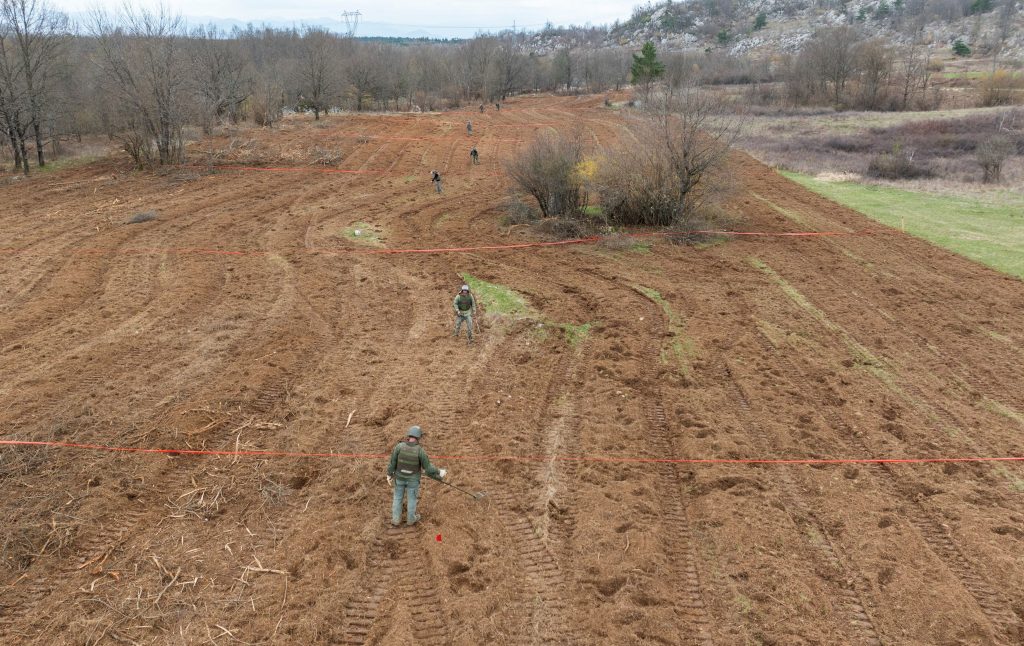Croatia is racing against time to rid its territory of deadly landmines left behind from the Balkan wars of the 1990s, with the goal of achieving mine-free status by 2026. As the country moves toward full European Union compliance, demining operations are accelerating across the nation.
According to Reuters, an estimated 180,000 landmines were planted during the conflicts that followed the dissolution of Yugoslavia. While Croatia has made substantial progress, approximately 180 square kilometers of land remain contaminated with unexploded ordnance. These minefields are primarily concentrated along the former front lines in the eastern and central regions of the country.

A drone view shows pyrotechnicians inspecting a field for explosive devices while demining a field near Gospic, Croatia, April 3, 2025. REUTERS/Antonio Bronic
The Croatian Mine Action Centre (CROMAC) has been at the forefront of clearance efforts, but the task remains formidable. Mine Action Review, an independent monitoring body, notes that difficult terrain, forested zones, and the sheer volume of mines continue to pose significant challenges. Government estimates suggest that more than 30,000 anti-personnel mines are still scattered across Croatian soil.
The presence of these mines represents not only a humanitarian threat but also a major hindrance to economic development, particularly in rural areas reliant on agriculture and tourism.

A pyrotechnician inspects a field for explosive devices while demining a field near Gospic, Croatia, April 3, 2025. REUTERS/Antonio Bronic
International funding and support have played a vital role in demining efforts. The European Union, along with various non-governmental organizations, continues to provide financial aid and advanced technology to support clearance operations.



